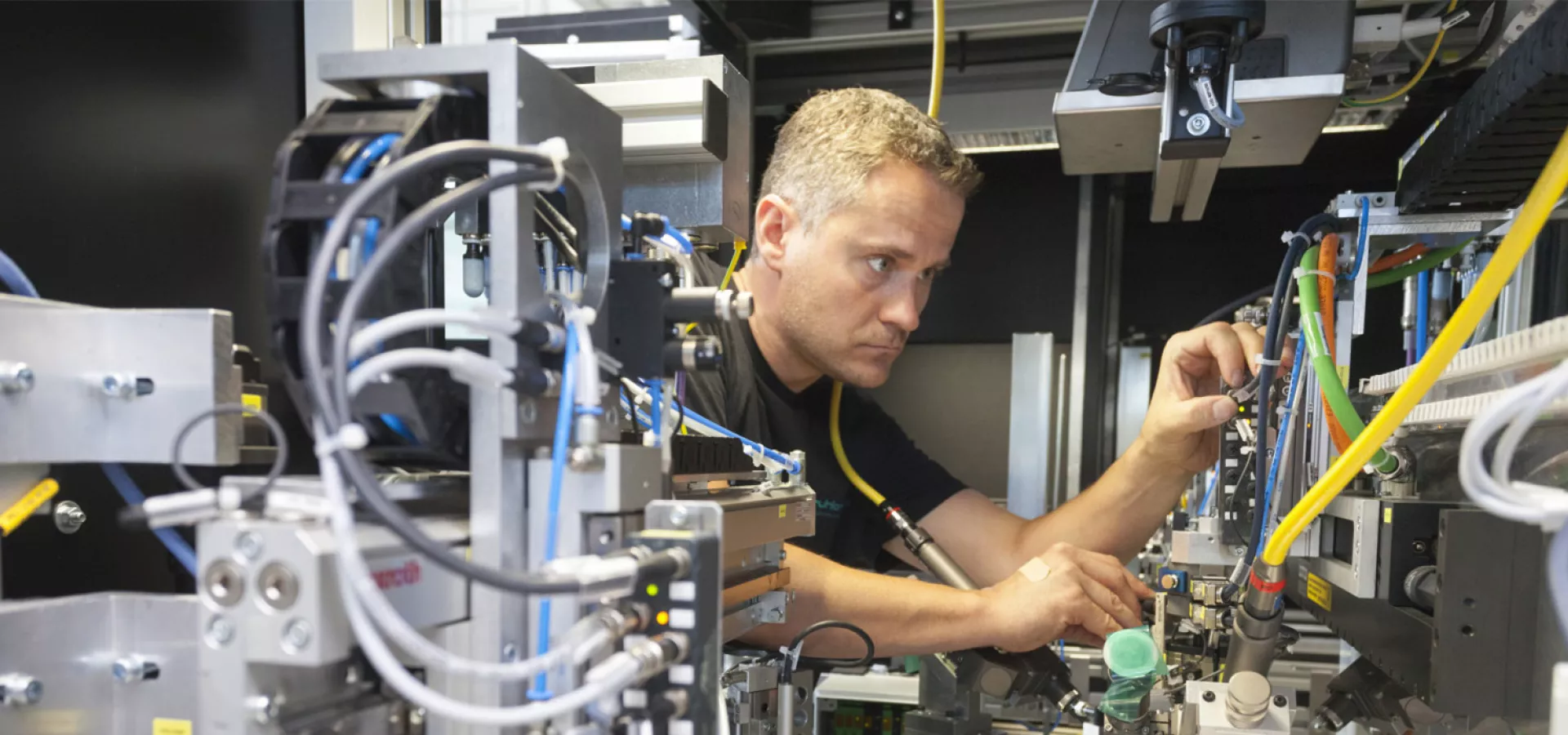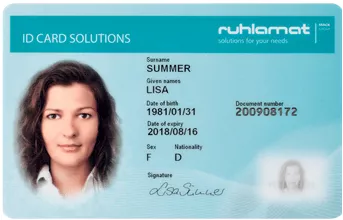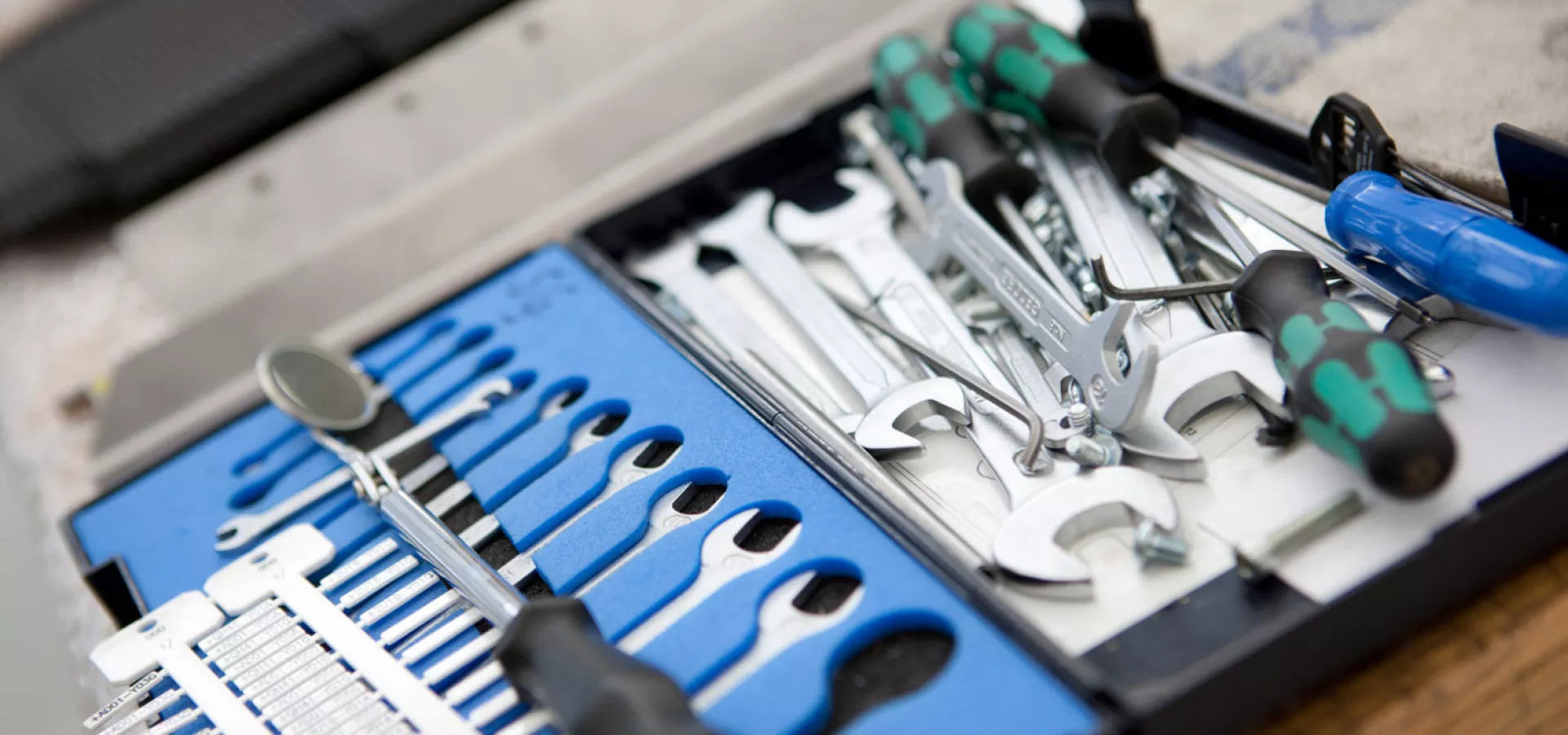
Personalised cards: Which technology is involved?
We have them in our hands every day. We identify ourselves using them as well as make purchases. They allow our daily routines to be efficient and it would be impossible to imagine our current society of information without them. Banking and SIM cards, driver’s licenses, identity cards for customers, employees or public pool visitors— ID- or so-called smart cards allow us to manage personalized data in many areas today.
Through printed photos, graphics or labels, optical identification features are created. If the card should transmit data, then digital information for reading devices—and thus entire networks— is available via integrated chips and RFID inlays. These previously mentioned elements can be freely combined making individual configurations for purpose-built solutions possible. Personalised cards organize various accounts and balances, granted access authorizations or permit the unique identification of persons. They can be also equipped with special security standards. In practice, passport photos, watermarks, barcodes or digital security keys for the personalisation of cards have all proven themselves.
Diversity: demands on the personalised card
The demands that these cards must fulfill depend heavily on the area of use, the produced quantity and the required security features.
Generally, however, a haptically nice feel, reliable functionality as well as high resolution and color fidelity in print are essential. In addition to environmental aspects, such as the environmental friendliness and sustainability regarding the manufacturing process and choice of materials, the longevity of the information carrier has become more and more a focal point. Accordingly, environmentally friendly, solvent-free printing methods and more resistant cards are preferred more often. Reliable, simple methods that can be applied flexibly in practice are in demand. Depending on the required function, built-in security features and produced quantity, the goal is to produce such cards cost-effectively. To produce largely tamper-proof, optically unique features, such as photos and fingerprints, high-resolution, high-performance printing methods are required.

Printing processes: eligibility and differences
Using the first printing techniques, ink was applied to surfaces through direct pressure.
To achieve this, specially manufactured printing plates are needed for each job, which is why this method is only economically feasible when produced in large numbers and mainly on paper. Although the method does provide high quality prints, it lacks the ability to implement variable data.
A further developed alternative to the traditional method is inkjet technology. Alongside laser technology for engraving, this is the most widely used non-contact printing method and is utilized in many home and office printers. Using variable data, inkjet printing makes it possible to produce high resolution images on countless surfaces without printing plates and with few moving parts.
By reducing wear, machines require less maintenance.
They allow for:
- less downtime
- fluid work-processes with print-on-demand
- cost-effective production, even in small quantities
Depending on the field of application, inkjet printing can be applied to an abundance of surfaces using varying materials. For example in graphical applications, various types of ink and solvent are used, which achieve different characteristics depending on the type of usage (e.g. UV-curing).
Completely different materials can be used for printing depending on function. In semiconductor technology, special material combinations make OLED screens for tablets or smart phones possible.
In the food industry, they are utilized in the realization of hygienic processes for manufacturing edible end-products. For example, food coloring can be used to produce an image on a wedding cake or an ice cream cone.
Mainly continuous inkjet (CIJ) and drop-on-demand (DOD) techniques are used. Ink is sprayed onto the surface using a few picoliter-sized droplets (1 pl = 10-12 l), which are far smaller than dropletss of water (ca. 5 * 10-5 l).
Continuous inkjet (CIJ)
When using CIJ, a continuous flow of ink from a tank is pumped into one or more spray nozzles.
Piezoelectrically controlled, high frequency droplets flow in the nozzles, which are charged hydrostatically with electrodes and precisely deflected through a current-controlled electric field, in such a way that the desired images form. Deflected droplets that are not used in the image are collected and recycled into the circuit.
The different colors used often dry, due to high printing speeds, using added solvents.
A specific mixing ratio with constant process supply has to be ensured at all times.
This means a longer warm-up phase and more complex logistics, which is why this method is almost exclusively used for industrial purposes, including the labeling of products and packaging. This method allows for fast printing with acceptable image quality.
Drop-on-demand (DOD)
DOD refers to a technique where droplets are formed and emitted only when needed, in contrast to the continuous flow of CIJ. Ink is neither collected nor recycled.
The printhead contains many small chambers, which for industrial purposes number in the thousands. Ink flows into the openings while precisely set low-pressure prevents leakage.
Different pressure pulses release the required droplets from their respective capillaries.
In thermal inkjets, a portion of the solvent-ink mixture is evaporated through heat. In piezoelectric inkjets, pressure pulses occur due to voltage-controlled short-term expansion of crystals.
After the pulse, the remaining ink retracts and the capillaries are refilled by the tank.
In addition, more sophisticated technologies can affect the size and speed of the droplet. Through an adept arrangement and superimposition of different-sized primary-color droplets, vibrantly colored prints of immense detail can be achieved. Various types of ink, based on solvents or water, can be used. In food packaging, electromagnetic- or UV radiation is often used, which nearly completely dries the ink and leaves no volatiles. This usually requires strongly bonded ink, which contains no solvents or other ingredients. To attain this, UV- or electron-beam curable inks can be used for example, which consist of different molecules with functional groups that determine the adhesion properties of the ink. Thus, this printing process can be used for the above-mentioned printing requirements in which no migration of ink components is permitted (e.g. food packaging).
DOD is best suited for high-resolution, sophisticated imaging stemming from variable digital data. The methodology even has applications in 3D-printing and nanotechnology.
Summary
Handy plastic cards allow an inexpensive automated card personalisation in many areas.
Depending on the quantity to be produced, they are independently or externally imaged and managed. Special security standards can be created as well as verified through digital or analog unique features, while electronic components transfer data using diverse, freely combinable technologies. DOD prints these cards reliably and future-orientated while allowing for fast and high quality personalisation of cards.
Learn more about our card personalisation products here.
